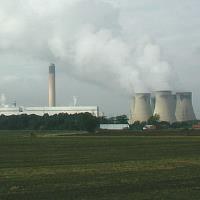
(BRUSSELS) – Greenhouse gas emissions in the European Union were reduced by 23% between 1990 and 2016, while the economy grew by 53% over the same period, according to the latest Commission report.
The report “Two years after Paris Progress towards meeting the EU’s climate commitments”, published on the day the UN Climate Conference COP23 in Bonn got under way, shows that while economic growth has recently picked up, the EU remains firmly on track to meet its 2020 greenhouse gas emissions reduction target.
“Two years after the adoption of the Paris Agreement, the EU remains fully committed to reducing its domestic emissions by at least 40% between 1990 and 2030,” said the EU’s Commissioner for Climate Action and Energy Miguel Arias Cañete: “We are on track to meet our 2020 target and close to finalising our climate legislation for the next decade. Our emissions decline while the economy grows, largely thanks to innovative technologies, showing that growth and climate action can go hand in hand.”
Under the Paris agreement, the EU has committed to cut CO2 emissions by at least 40% by 2030 while modernising the EU’s economy and delivering on jobs and growth for all European citizens.
In 2016, EU emissions decreased by 0.7% while GDP grew by 1.9%. The EU is one of the major economies with the lowest per capita emissions, and the emissions per unit of GDP continue to fall.
The progress report also looks at the EU’s contribution to international climate action. In 2016, the EU continued to be actively involved in global climate policy, for instance in the aviation and maritime sectors. The EU and its Member States continued to be a major provider of climate finance to developing countries, increasing their overall contribution to last year reach EUR 20.2 billion.
The EU is set to take three key legislative steps in 2018 to put the bloc on a path to achieving its 2030 emissions reduction target namely reforming the EU Emissions Trading System (ETS) for the period after 2020, setting binding national emissions targets for sectors outside the ETS and integrating the land use, land use change and forestry (LULUCF) sector into the EU’s emissions reduction framework.
Over the period 20132016, the EU Emissions Trading System provided Member States with EUR 15.8 billion in revenues, out of which approximately 80% will be used for climate and energy purposes, such as renovating housing and investing in renewable energy.
EU Climate strategies & targets
Report: “Two years after Paris Progress towards meeting the EU’s climate commitments”


